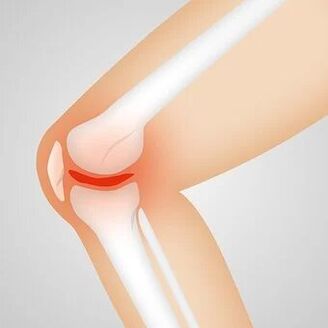Arthrosis (osteoarthritis) is a non -inflammatory pathology joints, characterized by degeneration of articular cartilage, marginal hypertrophy of bone tissue and changes in the synovial membrane. Often, this pathology occurs in the elderly.
joints, characterized by degeneration of articular cartilage, marginal hypertrophy of bone tissue and changes in the synovial membrane. Often, this pathology occurs in the elderly.
Arthrosis and arthritis
Do not confuse arthrosis and arthritis. In some sources, you can see that so -called arthrosis is different from arthritis because the first is non -inflammatory, and the second is caused by inflammation. In fact, arthritis is a collective (umbrella term) that includes osteoarthritis, rheumatoid arthritis, and gout.
Causes of arthrosis
Arthrosis is a fairly common disease. According to some reports, more than 75% of people over the age of 70 have certain signs of arthrosis. Although the incidence of arthrosis increases with age, the disease is not solely caused by the aging of joint tissue. Joint injuries and other factors can accelerate the progression of pathology. This includes:
- osteoporosis;
- overweight;
- postmenopausal women;
- various metabolic disorders;
- endocrine diseases;
- micronutrient deficiency;
- hereditary tendencies;
- congenital pathology of joint formation (dysplasia);
- joint injuries;
- common microtrauma;
- exposure to certain toxins;
- undergoing surgical interventions on joints, etc.
Pathology can be primary and secondary. If the cause cannot be determined, arthrosis is called primary (or idiopathic). If the disease occurs as a result of trauma, metabolic disorders, endocrine diseases, etc. , it is considered secondary.
Stages of arthrosis
There are 3 stages of the disease:
- There was no significant articular tissue morphological pathology. Changes in the synovial membrane and the composition of the synovial fluid were observed.
- Cartilage and menisci begin to deteriorate. Osteophytes (marginal pathological growths) can occur on bone.
- It is characterized by joint deformities, significant pathological movements or stiffness, as well as chronic pain (however, the latter symptoms are usually also characteristic of the previous stage).
Localization and pathological symptomatology
Arthrosis often affects the joints of the hand, including the distal interphalangeal joint, the proximal interphalangeal joint, and the metacarpal-carpal joints of the thumb. Other joints that are often affected by the disease include the cervical spine, lumbosacral, hip, knee, and first metatarsophalangeal joint. Osteoarthritis is rare in the ankle, wrist, elbow, and shoulder (in such cases, it usually has a secondary etiology). The clinical picture of pathology usually includes the following symptoms:
- history of joint pain;
- deterioration of joint function;
- swollen.
The pain usually lasts gradually, usually over many years. Painful outbreaks may be accompanied by partial or complete remission. Pain usually appears when the joint moves and subsides during rest, at least until the disease progresses to a more severe level. Joint cramps are often felt for a short time after rest. It usually subsides within seconds or minutes of movement. Often, symptoms appear in the elderly, while in people under the age of 40, arthrosis often occurs without symptoms.
Treatment of arthrosis
Conservative treatment of arthrosis
- rest, avoid excessive physical activity;
- weight loss (to reduce pressure on the joints);
- physiotherapy, such as exercise therapy;
- aids such as walking crutches, elastic knee supports;
- prudent use of anti-inflammatory drugs.
Also, patients are often shown spa treatments.
Surgical treatment of arthrosis
Knee replacement
Replacement arthroplasty
Prophylaxis
To reduce the risk of arthrosis, it is necessary to perform adequate physical activity, to treat injuries, congenital and acquired abnormalities in the biomechanics of the joints in a timely manner (e. g. , correction of flat feet). Preventive methods also include reducing excess weight (which puts pressure on the joints).






























